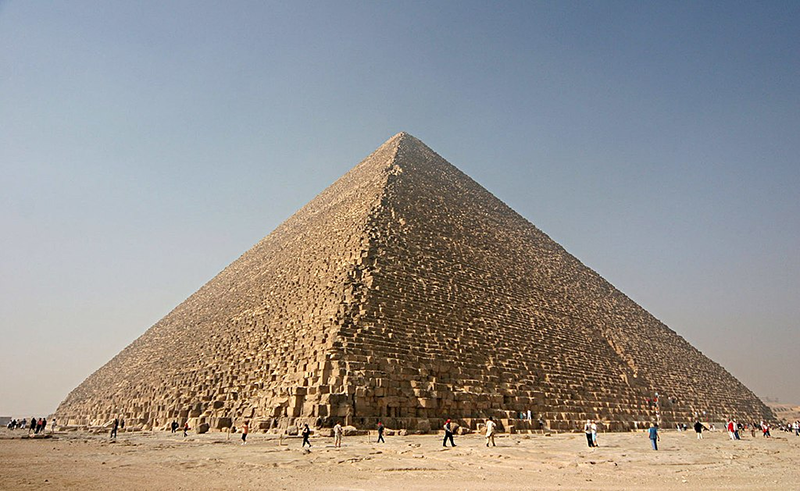
Complimentary Slopes
I had figured the use of a “known” sealed box woofer (whose roll-off slope would roughly compliment room gain slope) that would allow useful measurements to extremely low frequencies (LF). The producer wanted to get the sound on film clearly. He asked that I test it at as loud a level as practical.
I applied the first loud slow sweep starting at 200 Hz to 10 Hz — a comfortable level. Around 90 Hz I observed a strong room mode and sweeping at 1.1 Hz/sec — some real energy was transferred.
What really made everyone get up and run to the exit was the resonance near 30 Hz. At that moment I aborted that test. This was a good resonance, it got nice and strong and scared the wits out of a several crew members. Frankly, I was a little concerned myself. High-Q resonances at low frequencies can be very exciting!
The chances of something bad happening are small, but the consequences are large. Not wanting to be known as the first person in modern times to be buried in the pyramid, I moved the TEF and myself to the tunnel entry way instead of inside the King’s Chamber.
I spent several nights taking measurements there and was filmed without incident. I observed a good distribution of room modes and curiously, the red granite sarcophagus displayed several resonant modes, which directly corresponded to these room modes.
What The Witness Heard
Lying in the sarcophagus, one finds it’s nearly impossible to hum any note other than ones related to the main resonances. In that position when you do hum at the “right” frequency, it’s easy to make it seem very loud. But for someone standing next to you, it’s not loud at all. Also lying in it, the outside sounds that get coupled throughout, colors other people’s voices for a very “Darth Vader” effect.
My general observation is that the pyramid’s dimensions, the pyramid’s construction materials, and the box inside the King’s Chamber were designed to passively (as in zero electricity) enhance whatever sounds were present inside the chamber.
It also appears that any wind pressure across the pyramid’s internal air shafts, especially when it was new and smooth, was like blowing across the neck of a Coke bottle. This wind pressure created an infrasound harmonic vibration in the chamber at precisely 16 Hz.
Being a musician myself, I was especially interested to discover a patterned musical signature to those resonances that formed an F-sharp chord. Ancient Egyptian texts indicate that this F-sharp was the resonant harmonic center of planet Earth. F-sharp is (coincidentally?) the tuning reference for the sacred flutes of many Native American shamans.
Bottom line: We have 2.5 million blocks piled up in Egypt. Halfway around the world you have a guy whittling a tree into a musical instrument with exactly the same F-sharp resonance.
How Do They Do That?
The producer and crew were hot to film me placing an accelerometer on the big red granite beams which make up the roof of the King’s Chamber. Each of these beams weighs up to 90 tons (91.444 kg), and they were quarried at Aswan some 600 mi (966 km) away. They are also about 150 ft (46 m) high inside the pyramid. Another “how did they do that” question.
To reach the upper levels above the King’s Chamber, one re-enters the grand hallway, then climbs 40 ft (1.2 m) up an old extension ladder to a hole in the wall. A small bundle of knotted cords comes out of the hole, which is also the entrance to a small tunnel.
Once in the tunnel, you make a right turn and crawl a little more to an enlarged area carved out around a red Granite wall with a hole in it. Climbing through that opening, you come into the chamber directly above the King’s Chamber. This room is only about 4 ft (12.1 m) tall but is the same length and width as the King’s Chamber. The ceiling is flat and is covered with some very old graffiti.
The floor consists of big rounded bulges, which are the center beams that run the width of the room. It took some time to haul all the camera and lighting stuff up, set up, then blow all the dust out of the sensitive gear before preparing to roll.
